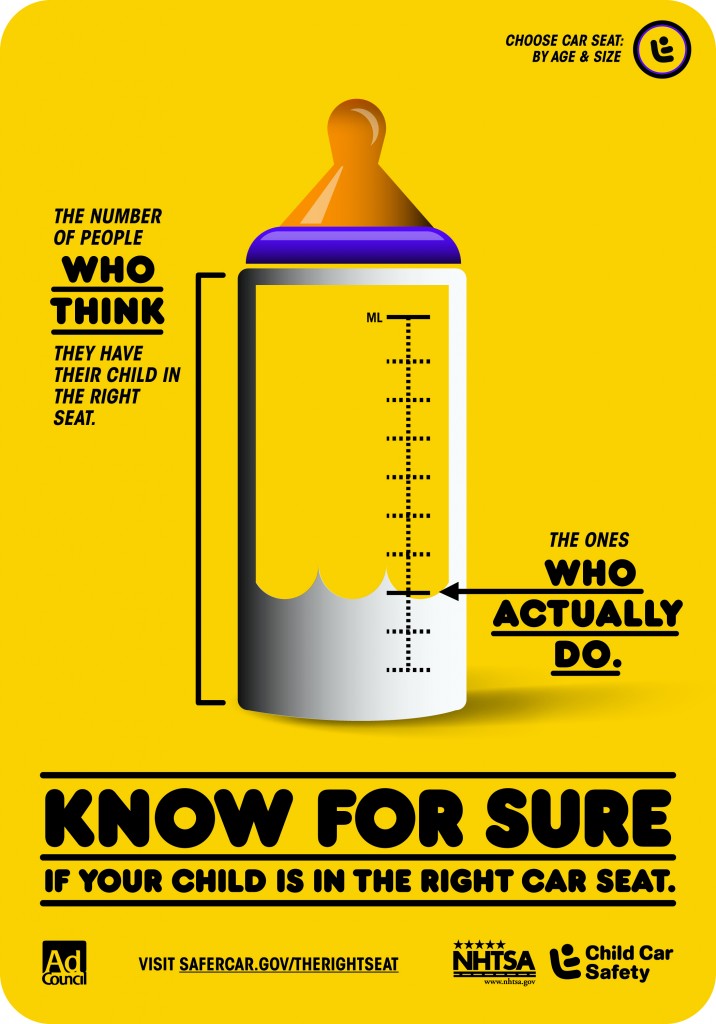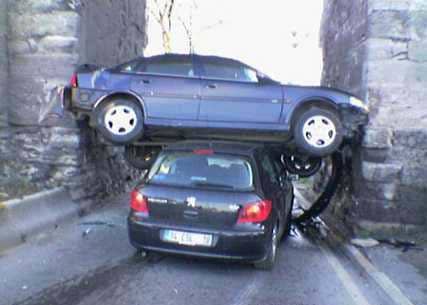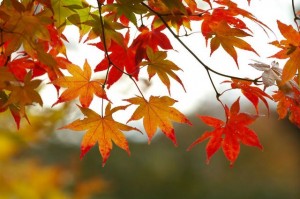by California Casualty | Safety |
As Hurricane Sandy whirls her way ashore–teaming up with winter storm conditions and a full moon as she does so–it’s becoming more and more clear that this storm has the potential to be extremely dangerous and damaging to communities all along the East Coast.

Late last week, we posted tips on how to prepare your family, self, and home for Hurricanes and Winter Storm conditions. To access that information–including checklists, preparation plans and pet and business info–click here.
As Sandy begins to make landfall, we want to make sure all those affected know where to get up-to-date, reliable information regarding evacuations, weather updates, and other emergency information.
Here are some emergency resources:
- This Google Crisis Map tracks Sandy’s progress, providing forecast tracks, current locations and active emergency shelter locations. Access the map here: Google Crisis Map.
- For the latest updates on Hurricane Sandy from the National Hurricane Center, click here.
- For a map of the latest warnings and advisories from the National Hurricane Center, click here.
- For state-specific information, click on YOUR state below:
- CT
- DE
- MA
- MD
- ME
- NC
- NH
- NJ
- NY
- New York City
- PA
- VA
- VT
- If you lose power or Internet signal and need to access Twitter to get Emergency Information, click here for tips on how to do so with your phone. For the Huffington Post’s suggestions on the Best Storm Tracker Apps, click here. We recommend following @FEMA to stay informed.
- It can be difficult to stay in touch with or reach family members during an emergency. The American Red Cross Safe and Well website allows you to register your current status or check on the status of your loved ones.
- To download the Free FEMA app for disaster safety tips, emergency meeting location information and a map of open shelters, click here.
As Sandy makes her way onto land, all those affected are in our thoughts. Please be smart and safe.
by California Casualty | Safety |
Halloween is less than a week away… but on the East Coast, something far scarier is brewing.
As Hurricane Sandy sets her sites on our shores, meteorologists warn that the hurricane conditions could mix with a winter storm to create a hybrid superstorm.
Due to the storm’s hybrid nature, and its Halloween-timed landfall, news agencies have dubbed it…
The Frankenstorm.

but for every Frankenstorm, we of course need…
Frankensafety.
But… how exactly does one prepare for a storm that is an unprecedented mix of both winter and hurricane conditions?
We thought you might ask.
Since reports are all over the map–with some saying the storm will be a dud and others calling it the storm of the century–we’re going with the prepare for all possibilities plan.
Frankenstorm is a two-headed beast. So below are some safety and preparation tips to tackle both hurricane safety and winter storm safety ‘head on.’
Hurricane Safety Tips:
- Build an emergency kit. Tips for building the kit can be found here
- Learn the elevation of your property and whether it is flood-prone
- Study community hurricane evacuation routes
- Know where you would go if a hurricane hit
- Make a plan on how to evacuate. A downloadable Family Emergency Plan can be found here. Print it off and complete it.
- Practice your plan
- Develop a plan for your pet. A great list of steps and supplies from the Federal Alliance for Safe Homes (FLASH) can be found here.
- Don’t forget about your business. Hurricane preparation does not end at home. Here is a great Business Survival Plan from the National Hurricane Survival Initiative
- Pay attention to the news. Know the guidelines of when you should evacuate and when you should stay. A good guide from the National Hurricane Survival Initiative can be found here.
- Cover all your home’s windows.
- Brush up on your watches and warning terms. That way, you’ll understand the risk and can better make safety and evacuation decisions. A good review from FLASH can be found here.
- Install straps or clips to securely fasten your roof to your frame structure to reduce wind damage
- Keep trees well-trimmed
- Clear loose or clogged rain gutters
- Reinforce your garage doors
- Bring in ALL outdoor furniture, decorations, garbage cans and similar items that are not tied down
- If you live in a high rise, prepare to take shelter on or below the 10th floor
- Print out and LAMINATE (to protect from water), tips for what to do during and after a hurricane and put them with your safety kit. You can find “during and after a hurricane” tips here.
- Check your property insurance policy for appropriate coverage. Here’s some information on California Casualty’s coverage and here’s some information on flood insurance-an important factor in Hurricane recovery.
Winter Storm Safety Tips:
- Prepare an emergency kit. Click here for tips.
- Add these winter-storm specific items to your existing kit:
- Rock salt or other products to melt ice on walkways. Here’s a list of recommended products from the EPA.
- Sand to improve traction
- Snow shovels and snow removal equipment
- Heating fuel in case you lose power. Be sure to store good, dry wood for your fireplace or stove
- Adequate clothing and blankets to keep you warm
- Read, print off, and laminate this Red Cross Storm Safety Checklist. Make sure you have a safety plan, and that you review it with your children
- If it gets cold and you want to use a heater, be SURE to read these safety tips! Portable heaters cause fires!
- Review these tips for pet safety during a winter storm
- Minimize travel. One of the most dangerous places during a snow storm is roadways. If you can, stay inside.
- Listen to the radio and be aware of changing weather conditions. To brush up on your winter snow storm terms, click here.
This Frankenstorm has the potential to be dangerous and deadly. Please protect yourself, your family and your home. Review your safety and preparedness plan BEFORE the storm hits.
(And in the meantime, we’ll hope it’s just like all those bad horror movies: All hype, no scare.)
by California Casualty | Safety |
It’s October! Aside from the month of changing leaves, spooky Holidays and falling temperatures, October is also…
National Bullying Prevention Month!

In the last several weeks, several bullying-related stories have been making waves in national headlines.
There was the high school student whose Homecoming nomination turned out to be a malicious prank, the TV news anchor whose weight became a national story, the blogger whose fear of a vicious blog ‘troll’ drove him off the Internet, the list goes on…
But each of these stories also highlights a growing trend on our national response to bullies. Rather than join in on the criticism, we have come together to say that this behavior will not stand.
The community rallied around that Homecoming Queen, cheering the high school girl on as she took the Homecoming stage looking gorgeous and confident in her red dress. We wrote hundreds of letters to that TV anchor, reminding her that she is so much more than her weight. We applauded the blogger for not only confronting the teen who made him fear for his life, but for forgiving him.
And it wasn’t just us who took a stand. It was the victims themselves. Rather than let those bullies get away with their behavior, they spoke up. And then they spoke out. They sounded the alarm that this behavior was going on, then they stood up for themselves.
When Leo Trayner, a blogger in the UK, met the 17-year-old man who had threatened his wife and family, he had this to say to him:
Look at me. I’m a middle-aged man with a limp and a wheeze and a son and a wife that I love. I’m not just a little avatar of an eye. You’re better than this. You have a name of your own. Be proud of it.
And you know what? His story went viral. 913 people commented on his story, applauded him for his bravery and thanking him for speaking up.
When Whitney Kropp, the 16-year-old who was nominated for Homecoming Queen as a cruel joke, spoke of her abuse, she told other victims of bullying:
Stand up for what you believe in and go with your heart and go with your gut. That’s what I did, and look at me now. I’m just as happy as can be! I can just prove all these kids wrong … I’m not the joke everyone thinks I am.
And Jennifer Livingston, the news anchor attacked for her weight, had this to say–on air–to every single person who has ever been hurt by the words of others:
To all of the children out there who feel lost, who are struggling with your weight, with the color of your skin, your sexual preference, your disability, even the acne on your face, listen to me right now: Do not let your self-worth be defined by bullies. Learn from my experience — that the cruel words of one are nothing compared to the shouts of many.
These three brave individuals teach us so much about bullying. They show that:
- Bullying affects people of all ages and types
- Victims of bullying are not alone
- Victims of bullies have nothing to be ashamed of– it is the bullies who bare the blame
- Standing up and speaking out will help not just you, but all of us, overcome bullying
- Bullies do not define who we are. We do.
- Standing up to bullies is hard, but once you do, you’ll have your community behind you for support
Bullying is a national issue. It’s not a teen issue, a school issue, or an Internet issue.
It’s an everyone issue.
We’ve made progress, but we still have a long way to go. There are still people out there–of all ages, from all walks of life–that deal with bullies every day. We still have victims of bullying who suffer in silence.
So this National Bullying Prevention Month, may we rise to the challenge. May victims of bullying everywhere feel the courage and support to stand up and speak out. And may we stand up to support and heal them when they do.
by California Casualty | Safety |
Car crashes are the number one killer of children 1 to 12 years old in the United States.
As part of National Preparedness Month, today we will be talking about Car Seat Safety (it’s also National Child Passenger Safety Week!)
Just how important is making sure your child is buckled in correctly to an age and size appropriate car seat?
On average, 2 children are killed and 325 are injured in car accidents every day.* This fatality rate could be reduced by about half if the correct child safety seats were always used.**

So how can you check to make sure you are using the correct car seat in the correct way for your child?
Check out these great recommendations for car seats and boosters as well as installation and maintenance tips.
To make sure your child’s seat is the correct one installed in the correct way, you should have it inspected by a certified technician. Often, these certifications are free. You can find a location close to you by clicking here.
We also wanted to share a great tip with you that we found and shared on our Firefighter Pinterest board. It started with this photo:

In this photo, you can see the parent has attached Emergency Contact and Medical Information.
When we found this Pin, it was shared by a Firefighter/Paramedic. He commented that this kind of information is critical in the event of a car crash. In case the driver is separated from the child or otherwise unable to communicate medical information to First Responders, securing vital information to a car seat will help provide EMTs with potentially life-saving information.
While some newer car seats come with a spot for this information, many do not. Even if your child’s car seat does not have a specific spot for this info, you can secure it to the seat yourself. Simply write up the information (we recommend using bright or neon paper so it’s more noticeable) and use waterproof, clear tape to secure it to your car seat.
Here are some suggestions on what to include:
- Child’s Name
- Date of Birth
- Parent Identification and Contact Information (Names and Phone Numbers)
- Emergency Contact Information (Name and Phone Number)
- Primary Physician/Pediatrician Information
- Any known medical conditions
- Any known allergies
- Any relevant medical information
No matter how safe of a driver you are, remember that there are other drivers on the road and that accidents happen every day. Help safeguard your child’s safety by having your car seat inspected and by securing contact and medical information to your child’s car seat.
Sources:
*Based on National Highways Traffic Safety Administration c2010 Crash Data
**Based on the latest mortality data currently available from the CDC’s National Center for Health Statistics
by California Casualty | Auto Insurance Info, Safety |
Car accidents happen.
Whether it’s a fender bender or a pileup, your fault or someone else’s, they just happen.

So when we talk about preparedness during National Preparedness Month, car wrecks should be on your list of scenarios for which you are prepared and ready.
Because how you act following a car wreck won’t just affect the Insurance Claims process, it could affect the safety and security of yourself, your property and your identity.
Did you know that sharing some personal information could put you at risk for identity theft following a car accident?
Check out this information from a 2012 National Association of Insurance Commissioners survey:
- Thirty-eight percent of consumers believed they should share their driver’s license number with the other driver — one in six would even allow the other driver to photograph the license as a convenient way to exchange information.
- So what’s the risk? Many retailers accept driver’s license information to verify your identity over the phone. In fact, your license number is the most common way to confirm your identity after Social Security number and date of birth.
- Twenty-five percent of consumers surveyed said they would share their home address.
- So what’s the risk? Actually, your home address gives identity thieves the physical location of your mail or garbage, the first place criminals often look for personal financial information. And, now a stranger knows where you live, possibly putting your personal safety at risk.
- Twenty-nine percent of survey respondents believed they are required to share personal phone numbers. In fact, sharing your phone number is rarely necessary.
To help you take some of the guesswork out of what to share and what to safeguard following an accident, the National Association of Insurance Commissioners released an app for Smartphones called The WreckCheck App.
- It’s free of charge!
- Works for iPhones and Android phones
- Outlines what to do following an accident
- Walks you through process of creating accident reports
- Tells you which pictures to take
- Helps document damage
- Assists in attaining and sharing only necessary information
- Allows you to email completed reports to yourself or Us (your insurance company!)
For more information on how to download or use the WreckCheck App, click here.
by California Casualty | Safety |
It’s officially September!
Goodbye Summer sunshine, hello Fall foliage!

Aside from being the season of cider and sweaters, Fall is also…
National Preparedness Month.
Here at CalCas, we will be celebrating by posting weekly Preparedness content right here on our Blog 🙂
First on deck: A Preparedness App!
As a recent iPhone converter, I am all aboard the App train. I’m always on the lookout for exciting new stuff and this new app from the Insurance Information Institute is one such find!
It’s called the “Know Your Plan” App and it’s all about streamlining your Disaster Prep Plans.
What you should know about this App:
What it provides:
- A library of preloaded preparedness checklists for disasters including:
- Hurricanes
- Floods
- Earthquakes
- Tornadoes
- Severe Cold
- Wildfires
- Evacuation
- Tips for preparing an emergency kit
- Important property protection information
- Step-by-step preparedness tips
- Custom lists for your personalized preparedness plan
- Targeted task completion dates
- Tools to chart your progress (including a countdown feature!)
- Checklists share options for family and friends
- Evacuation resources (even one for pets!)
- Geotargeted emergency alert feeds for up-to-the minute information about local evacuation routes and other disaster information
- User-customizable notes
As Fall and September swing into full gear, make sure you are ahead of the curve when it comes to Disaster Preparedness.
After all, you never know when you may need it.
By compiling disaster preparedness information and plans all in one place–on your phone–you are putting life-saving plans in place.
Stay tuned for more great Preparedness content throughout the month!







